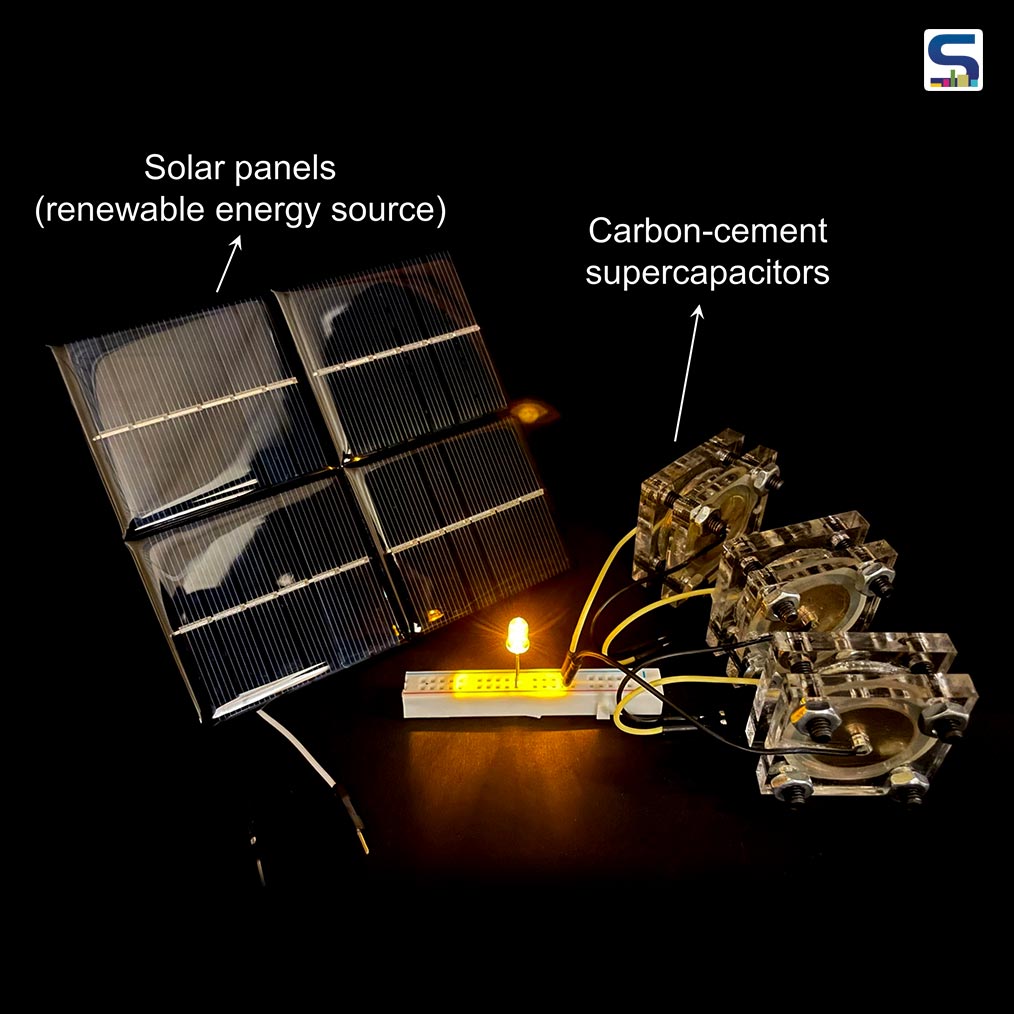
Researchers at the Massachusetts Institute of Technology (MIT) have developed an economical energy storage solution with the potential to be integrated into roads and building foundations, facilitating the transition to renewable energy sources. The MIT team has engineered a supercapacitor, a rechargeable battery-like device, using a mixture of cement, water and carbon black, a fine carbon powder. This breakthrough is expected to embed energy storage within concrete, enabling roads and buildings to charge electronic devices. Know more about it on SURFACES REPORTER (SR).
In contrast to conventional batteries that rely on limited resources like lithium, this technology can be manufactured inexpensively using readily available materials, including cement and carbon black – both widely used globally. The team, led by MIT professors Masic, Franz-Josef Ulm and Yang-Shao Horn, along with postdoctoral researchers Nicolas Chanut, Damian Stefaniuk and Yunguang Zhu at MIT and James Weaver at Harvard’s Wyss Institute believes this innovation can accelerate the global shift toward renewable energy.
Unlike traditional batteries, which can be expensive to scale up for large-scale energy storage, the ubiquity of cement makes this technology highly promising. The researchers have validated their concept through button-sized supercapacitors that powered an LED light. They’re now working on a larger version to demonstrate scalability. The projected capacity of a supercapacitor this size is approximately 10 kilowatt-hours, enough to meet the daily energy needs of a typical household. Integrating supercapacitors into concrete foundations could potentially be done with minimal extra cost, enabling a house to store and use energy effectively.
Ulm stated that this technology could transition from lighting LEDs for seconds to powering an entire house by adjusting the electrode thickness. The team also envisions embedding the technology into concrete roads to charge electric vehicles while in motion, similar to wireless phone charging technology. This development has potential applications beyond energy storage, such as heating systems. The research findings will be reportedly published in an upcoming edition of the science journal PNAS.
Image credit: MIT